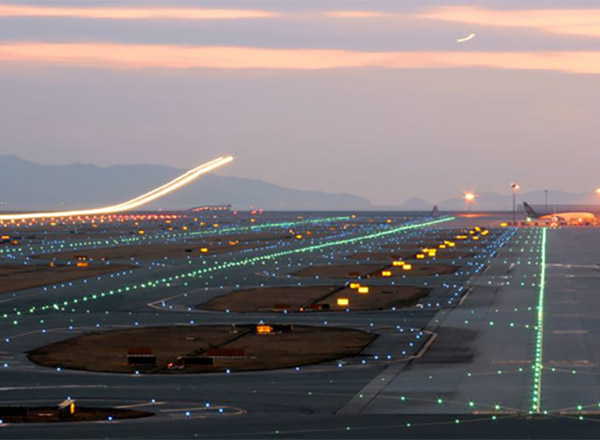What You Need To Know About Airfield Lighting Cables
Airfield lighting cables, also known as Type C airfield cables, are a special type of industrial cable used at airports to maintain runway and taxiway lighting systems that are critical to pilot visibility. These cables are used in all steps of airfield lighting, including runway end lights, runway end identification lights, runway edge lights, centerline lights, approach area lights, and approach lighting systems. Due to the unique nature of airport operations and the fact that they are used for safety-critical installations, airport lighting cables are designed to be more durable and long-lasting. Airports work like clockwork, and any delays in operations can pose physical and financial risks to all involved. Therefore, airport lighting cables must also work like clockwork.
These cables are also designed to prevent overheating because they are exposed to high temperatures. While the recommended continuous operating temperature is 90 C, airfield ground lighting cables are prepared to withstand more extreme conditions, as the maximum operating temperature during a short circuit is 250 C. Given the varying weather conditions to which airfield grounds are exposed, airfield lighting cables are also waterproof and resistant to the effects of sunlight and wear and tear, as well as the chemicals that may be used at airports.
Applications for airport lighting cables
While the primary purpose of airfield lighting cables is to maintain runways and taxiways, they are also used for a variety of lighting applications within airports. Some typical applications include obstacle lighting, navigation equipment, and all possible types of lighting and control circuits.
Airfield lighting cables are unique in terms of installation, as they can be installed in a variety of ways. These cables are suitable for direct burial, raceways, and installation in metallic and non-metallic conduits and ducts. In addition, airfield lighting cables can also be installed in overhead cables. Because of this versatility, airfield lighting cables can be used for any purpose within an airport that requires these types of installations. However, direct burial and conduit burial are the most widely used installation types in runways and taxiways.
Construction of Type C Airfield Cables
Most Type C airfield lighting power cables are constructed of annealed stranded bare copper with Class B stranding and XLPE insulation. The cross-linked polyethylene insulation and jacket provide superior dielectric strength, better impact resistance, and a higher temperature range than comparable products. It also has better chemical resistance, which is essential because airports often use de-icing fluid chemicals. However, some manufacturers offer airfield lighting cables with alternative PVC and PE insulation. At Nassau National Cable, we offer Type C cables with XLPE insulation because of their overall better quality in these environments.
Airport ground lighting cables also have semiconductor tape applied to the insulation. This is done to improve the heat and moisture resistance of the cable, which is critical in the airport environment. The cables also have an optional external shield, usually PVC, PE, HDPE, or CPE sheathing, which helps prevent unnecessary power loss.

Types of airport lighting cables
The main difference between the different types of airport cables is their voltage. The standard voltages for lighting runway cables are 5KV and 600 volts. When you purchase runway lighting cable, make sure it meets or exceeds FAA Specification L-824, which is required to legally install lighting cable at airports.
Airport Lighting Cables 5KV are intended for primary circuit high voltage lighting applications. These cables are placed between the current regulator and transformer on the runway and taxiway. They are expected to be very durable and waterproof. The cables are available in sizes between 8 AWG and 4 AWG, with or without semi-conductive protective tape.
Airport lighting cables 600 V are designed for secondary lighting circuits. For example, these cables connect runway and taxiway transformers to electric lights. While they are not as durable as their 5KV counterparts, their advantage is their flexibility. Cable sizes range between 12 AWG and 4 AWG.
